Manuscripts Etc.
| CLOSE WINDOW |

|
The following items are drawn from the William Faulkner Foundation Collection at the University of Virginia's Albert and Shirley Small Special Collections Library (http://small.library.virginia.edu/). |
|
Faulkner's first published Yoknapatawpha fiction - which came out in a shortened form as Sartoris in 1929 but which since 1973 appears, unabridged, as Flags in the Dust - focuses on the plight of the sons of two old aristocratic Southern families (the Sartorises and the Benbows) who have been displaced by modernity. But when, not long after returning to Oxford to live in 1926, Faulkner sat down to write about a mythical county in Mississippi, he originally focused on the other half of this history: the rise of a new South, as personified by an upstart named Flem Snopes. Flem is the son of a share cropper who has schemed his way up the ladder to become the president of the town bank. Faulkner's working title for this novel was "Father Abraham." The title is explained by the one reference to Flem in Flags, explaining how once Flem had moved into Jefferson from Frenchman's Bend, "like Abraham of old, he brought his blood and legal kin household by household, individual by individual, into town and established them where they could gain money." Faulkner seems to have worked hard on this story from late 1926 into mid-1927, but at that point broke it off to begin Flags instead. The 24-page holograph manuscript of "Father Abraham" is in the Arents Collection at the New York Public Library. In the Faulkner Foundation collection are three different typescripts of this manuscript, along with fragments from three other typescripts - all essentially the same as the manuscript. Below are the first ten pages of one of the collection's two carbon typescripts. (You can read pages 11-19 of the ribbon version of this typescript in the "Spotted Horses" manuscripts display.) In this opening section Faulkner starts with Flem in the bank as "symbolic of an age and of a region," and in particular of the idea of "Democracy" - an idea which is described unfavorably (page 1). But then, as his readers would soon learn to expect, Faulkner looks backward at the place from which Flem launched his assault, the "settlement of Frenchman's Bend," "twenty miles southeast of Jefferson" near "the hillcradeled cane and cypress jungles to [of the?] Yocona river" (page 2). "Yocona" is the name Faulkner originally gave his mythical county, here and in Flags. That would become "Yoknapatawpha" a few years later, but in other respects it is perhaps surprising how much of the fiction that Faulkner will write for the next three decades is already present in these first ten pages of his first "Yoknapatawpha" fiction: 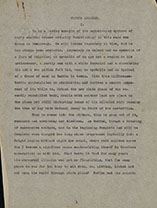 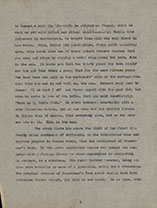     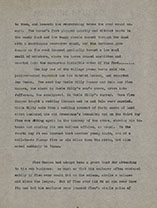 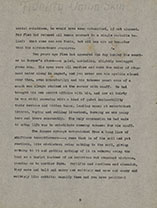 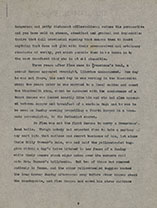 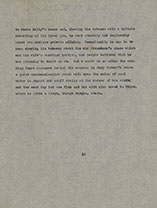 What follows after page 10 is the story of how the wild horses that Flem brought into the county were auctioned off to the hapless farmers of Frenchman's Bend. If Flem himself is Faulkner's "symbol" of modern man, perhaps - though the word is not explicitly used - those horses symbolize the chaotic and destructive forces which modernity lets loose upon the social order. In any case, after repeated revisions, the story of their auction was published in Scribner's magazine in 1931. Along with an increasing cast of other Snopes, Flem appears often in the fictions of the 1930s. At the end of that decade Faulkner resurrected the idea of telling the story of Flem's rise to power, though by then he is thinking about a trilogy of novels. The first ten pages from "Father Abraham," revised, appear as the opening for The Hamlet (1940), and the horse auction is retold in Book Four of the novel. The Hamlet takes Flem's narrative up to the moment he first heads for Jefferson. Faulkner finally told the rest of the story, including the unscrupulous means by which he gained control of the Sartoris bank, in The Town (1957) and The Mansion (1960), at the other end of his career. SOURCE: Carl Rollyson, The Life of William Faulkner, Vol. 1: The Past Is Never Dead. (Charlottesville: University of Virginia Press, 2020) Citing this source: |
